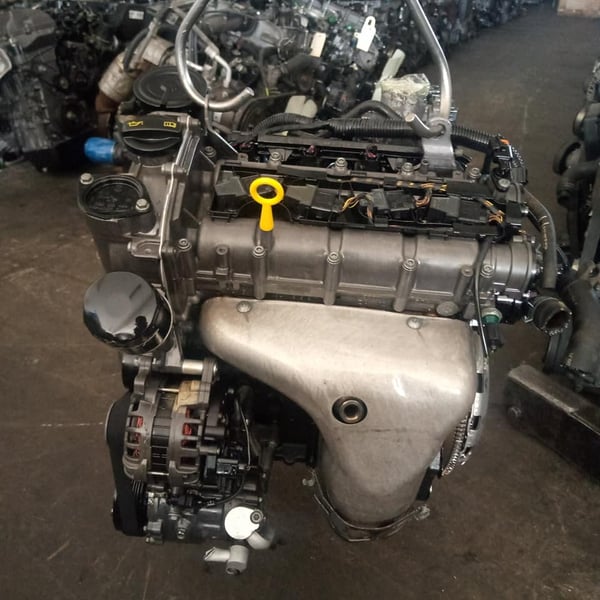Improve productivity with a powerful clp engine.
Improve productivity with a powerful clp engine.
Blog Article
How a Clp Engine Can Boost Performance in Different Industries
The development of CLP engines marks a significant change in functional performance across different industries, driven by their capability to optimize fuel intake and minimize downtime. Industries such as manufacturing and logistics stand to acquire significantly from their robust design and regular power result, which assure to improve operations and boost performance. As companies progressively focus on sustainability alongside efficiency, the duty of CLP engines ends up being even more critical. What stays to be seen is how these innovations will form the future landscape of industrial procedures and their effect on more comprehensive economic fads (clp engine).
Overview of CLP Engines
CLP engines, or Constant Liquid Propellant engines, represent a considerable improvement in propulsion technology, especially for area applications. These engines make use of a constant feed system that enables the sustained expulsion of propellant, bring about improved effectiveness and performance contrasted to standard solid or hybrid propulsion systems. By keeping a consistent flow of fluid propellant, CLP engines can accomplish much more precise drive control, which is important for maneuvering spacecraft in numerous objective scenarios.
The layout of CLP engines integrates innovative materials and innovative gas management systems. clp engine. This causes reduced weight and raised dependability, essential variables for long-duration area goals. The continual operation decreases the danger of combustion instability, an usual challenge in standard rocket engines.

Advantages in Production
The manufacturing of Constant Fluid Propellant (CLP) engines offers several notable advantages that improve both effectiveness and cost-effectiveness. Among the key advantages is the streamlined production process, which decreases the complexity related to typical propulsion systems. By making use of fluid propellant, suppliers can achieve higher precision in engine performance, causing optimized power outcome and decreased waste.
Additionally, CLP engines facilitate a higher level of modularity, permitting for much easier combination into numerous manufacturing lines. This adaptability can considerably lower preparations and improve overall operational adaptability. Using CLP technology also often tends to lessen the need for extensive upkeep because of fewer relocating components, which equates into lowered downtime and functional costs.

Applications in Logistics
Leveraging Continuous Liquid Propellant (CLP) engines in logistics uses considerable advantages in functional performance and reliability. These Visit This Link engines supply a durable option for different transport requirements, allowing the seamless motion of products across large ranges. The integral layout of CLP engines enables constant power outcome, which equates into smoother and more foreseeable transport timetables.
Among the crucial applications of CLP engines in logistics is in heavy-duty products transportation, where they can drive both ground and airborne cars. Their ability to maintain high efficiency under differing load conditions guarantees that shipment timelines are met, thus enhancing consumer contentment. In addition, CLP engines can be incorporated right into automated logistics systems, promoting real-time monitoring and maximizing course planning.
Furthermore, the toughness of CLP engines minimizes maintenance downtime, allowing logistics business to maximize their functional capacities. This is especially useful in warehousing operations, where performance in managing and delivering products is crucial. As logistics remains to advance, the assimilation of CLP engines stands for a forward-thinking strategy that not just enhances performance yet also sustains the sector's growing demands for reliability and rate.
Effect on Energy Effectiveness
Just How do Constant Liquid Propellant (CLP) engines boost power efficiency in transport? CLP engines use a consistent circulation of liquid gas, enhancing burning processes and keeping a steady thrust outcome. This style minimizes power losses connected with conventional burning engines, where fuel shipment can vary and result in inefficiencies.
The constant procedure of CLP engines enables a much more reliable thermal cycle, leading to greater details look at this website impulse compared to standard engines. clp engine. This translates to minimized gas consumption for the same amount of work done, significantly lowering functional prices throughout various transportation industries, consisting of air travel and maritime sectors
Moreover, the capability of CLP engines to preserve ideal efficiency under varying load conditions minimizes the demand for constant velocity and deceleration, even more improving gas performance. Improved energy effectiveness not just adds to set you back financial savings but also causes decrease greenhouse gas exhausts, straightening with international sustainability goals.
Future Trends and Innovations
Emerging developments in Constant Liquid Propellant (CLP) engine modern technology pledge to change the landscape of transport performance and sustainability. As industries pivot toward greener alternatives, CLP engines stand at the center, incorporating cutting-edge products and style approaches that enhance efficiency while decreasing ecological effect.
One of one of the most appealing patterns is the adoption of crossbreed systems that integrate CLP engines with renewable resource resources. This synergy can optimize gas intake and reduce exhausts, straightening with worldwide sustainability goals. Innovations in computational fluid dynamics (CFD) are promoting the style of more aerodynamically reliable engines, leading to minimized drag and improved fuel efficiency.
Furthermore, the growth of wise monitoring systems is established to improve operational performances. These systems leverage data website here analytics and IoT modern technology to enhance engine efficiency in real-time, making sure that the engines run within their most effective specifications.
As research continues to discover alternate propellant solutions-- such as biofuels and synthetic gas-- the future of CLP engines looks promising. By harnessing these advancements, industries can not just boost their efficiency yet likewise add significantly to a cleaner, a lot more sustainable future in transport.
Final Thought
In verdict, CLP engines represent a substantial development in effectiveness throughout multiple markets. The integration of sophisticated products and less relocating parts decreases upkeep requirements, while positioning with sustainability objectives placements CLP engines as a crucial technology for the future.
Report this page